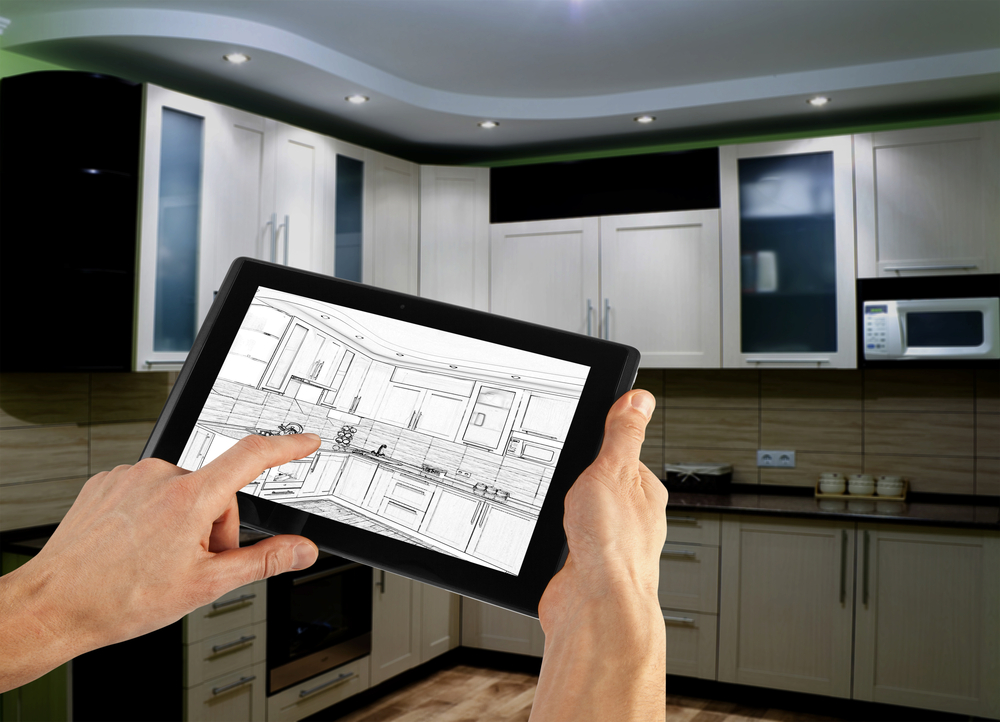When it comes to the kitchen, there’s more to good design than pretty countertops and high-end appliances. As any cook would tell you, function is the basis of good design — because the way your kitchen is laid out makes a huge difference in how quickly and efficiently you’re able to prepare meals, not to mention how much you’ll enjoy making them. Place the refrigerator too far from the range, and you force yourself to waste time running back and forth between the two. Choose a layout without thinking about how you’ll use it, and you may wind up preventing others from getting involved with you in the tight space. So whether you’re buying a new home or renovating, consider what goes into a kitchen that is as efficient and functional as possible. By knowing what key qualities to look for, you’ll know how to find or create the kitchen that works best for you! Here are five defining qualities of an efficient, highly functional kitchen floor plan:
- Convenient Work Triangle: Anytime you talk about kitchen design, the term “work triangle” is going to come up — it refers to the pathway you take between the refrigerator, the sink and the oven/stove. In an efficient kitchen, that pathway makes a convenient triangle, so moving between the three stations is fast and easy. In situations with a one-walled kitchen where a triangle isn’t possible, the most efficient layout will at least have the three stations near one another.
- Space for More Than One Cook: Kitchen design of 60 years ago sought to accommodate needs of one cook who would be doing all the meal preparation and planning for a household. But because society has changed since that time, so have kitchens. Whether it’s roommates sharing cooking responsibilities or families coming together to make food, it’s common for the kitchen to be a place where the household gathers. That’s why, nowadays, it makes much more sense to create space for more than one person to work in the kitchen. Smart kitchen designs will accommodate this with additional prep zones like islands or extra counter space, as well as options such as a second sink when possible.
- Generous Counters: Even a small kitchen needs adequate countertop space in order for you to be able to get any real cooking done. And to be most efficient, this workspace needs to be close to both the sink and the stove. This way, you can easily grab food, chop it, place it on the stove; grab ingredients, mix them and place them in the oven, and so on.
- Wide Walkways: An important consideration, particularly in galley kitchens or kitchens with islands, is that your walkways need to be wide enough to allow for easy traffic. Paths should be at least 3 feet wide everywhere — at up to 4 feet wide in cooking areas where you want more than one person to be able to work.
- Fridge on the End: Generally speaking, the refrigerator will boost efficiency best when it’s on the end of your cabinets rather than in the middle of them. It should also be next to or across from a wide counter in order to make unloading groceries simple. Last, it should be easily accessible to passersby who will be able to grab drinks or snacks without disrupting workflow in the main cooking areas.
Whether it’s a small galley kitchen or a large gourmet cooking space, any kitchen will benefit from smart design choices. Follow the tips above in order to make your kitchen both efficient and usable — so you can enjoy it and the meals you make in it for years to come!
Author Bio:
Lindsey Schroeder is the voice behind all social media accounts and blogs for Archway Construction, kitchen renovators and remodelers that have served Metro-Chicago for over 27 years. She also loves working with homeowners ensuring their remodeling projects are a great investment while changing the look and feel of their home.

